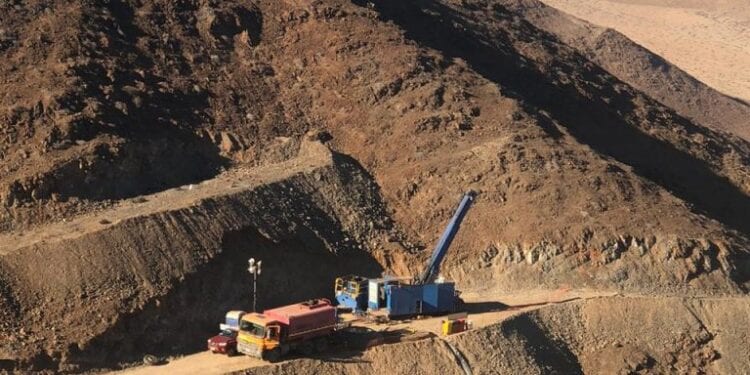Widespread Surface Gold Mineralisation Identified In Chile
Tesoro Resources Limited (ASX: TSO) has delineated a new gold mineralised zone outcropping at surface and open in all directions with assay results for a systematic surface trench channel sampling programme completed over the Ternera East Prospect at the El Zorro Gold Project in Chile.
Multiple wide mineralised zones have been delineated, associated with occurrences of the favourable host rock, the El Zorro Tonalite (EZT), quartz veining and quartz breccias predominantly within the EZT.
Surface gold mineralisation at Ternera East has so far been defined over an area of approximately 850m by 300m.
Managing Director, Zeff Reeves, said the Ternera East mineralised zone exhibits similar geological features to the adjacent Ternera Gold Deposit with gold mineralisation associated with the EZT and strongest results near north-south fault zones.
These results define a total target gold zone associated with the EZT, stretching from Drone Hill in the west to Ternera East measuring over 1.2km east to west and 1.3km north to south. Potential exists for mineralisation to continue to Toro Blanco in the north where favourable host rocks have been identified during mapping.
“This is a significant development at El Zorro,” Mr Reeves said,
“The new Ternera East discovery at El Zorro provides a significant increase in size to the overall Ternera gold system. Through methodical exploration work our in-country team has done a tremendous job identifying Ternera East as a high priority target which has culminated in a more than doubling of the surface gold footprint at Ternera.
“We are encouraged by the discovery of extensive outcrops of mineralised El Zorro Tonalite, which appear to be continuous to Toro Blanco in the north. We are planning to drill at Ternera East in the coming weeks.”
A total of 839 controlled samples were collected from 143 excavated trenches at Ternera East, targeting outcropping EZT and favourable fault zones known to control gold mineralisation at El Zorro.
Trenches were excavated continuously across strike of mapped structures to an average depth of 0.50m and bedrock was then continuously sampled along the trench walls with sample width of between 1.00m and 3.00m.
Multiple anomalous gold zones have been identified at Ternera East which are coincident with numerous EZT intrusions, which are interpreted to be associated with possible extensions of the EZT bodies from the main Ternera Deposit, extending east. The abundance of mineralised EZT intrusions indicates the potential for larger EZT bodies to be present at depth.
Mr Reeves said an initial drilling programme at Ternera East will commence as soon as possible.












